Setting out on the path to create or revamp your home is an exhilarating adventure, filled with dreams and a keen eye for detail. With more than twenty years in the art of renovating homes as well as creating homes from scratch, I’ve been privileged to see dreams materialise into spaces that not only endure but also tell a story. In this transformative process, an architect is more than just a service provider—they are the pivotal bridge that connects what you imagine to what you can touch and feel, intertwining sustainability with style, and your personal preferences with practicality.
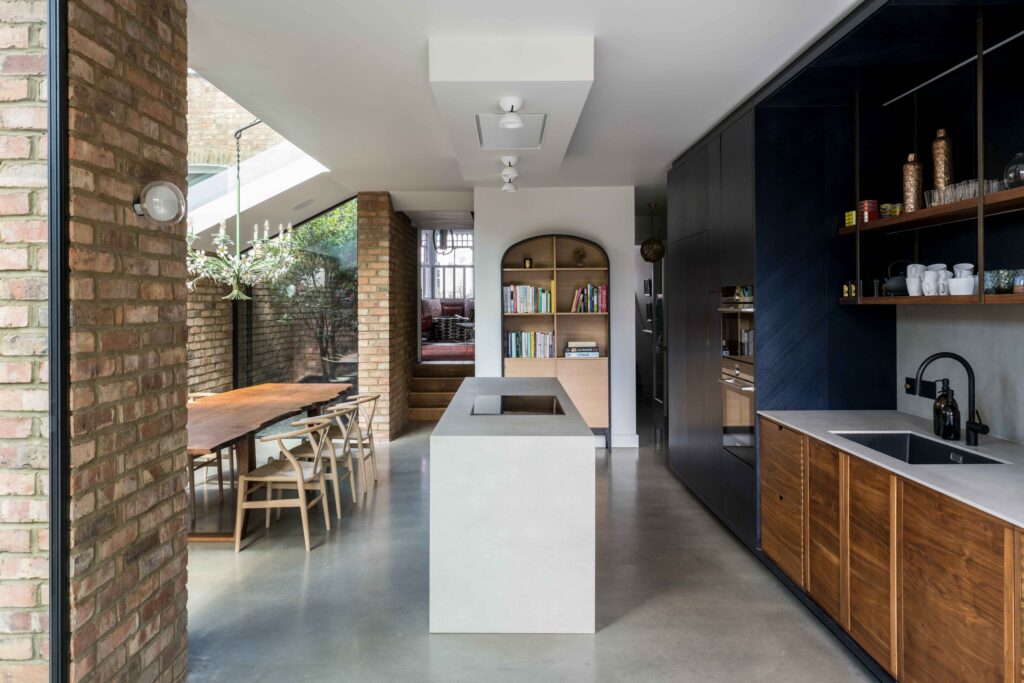
The architect of choice is not just someone who draws up plans; they are the artisans of spaces that vibrate with your values and embrace the rhythms of your daily life. In the chapters to come, I will share with you my wisdom on selecting an architect – a partner who will skilfully weave your visions into homes that are not only energy-efficient and have a gentle footprint on the planet but also brim with modern elegance and that indefinable warmth of home.
Chapter 1: Understanding the Architect’s Role
Delving into the world of architectural design and construction can be akin to setting sail on the ocean; it’s an adventure, certainly, but one that calls for a seasoned captain at the helm. That captain, in the context of creating your haven, is your architect.
We are not merely designers or visionaries; we are the custodians of your trust, the translators of your dreams into the language of bricks, concrete, glass, and timber.
In the context of our small, design-led studio, this role takes on an even more nuanced shade. We don’t just aim to create spaces; we strive to create ethically responsible, environmentally sustainable homes that are as kind to the planet as they are to your well-being. This is architecture with a conscience, and it’s a passion that burns at the core of our practice.
Our role encompasses a multitude of responsibilities, all carried out with an unwavering commitment to achieving your vision. As architects, we are the bridge between the abstract and the actual. It starts with an idea, a spark in your imagination, and through a process of careful consideration, creative exploration, and technical expertise, that idea is brought into the physical realm.
We are problem-solvers, trained to foresee potential obstacles that may not yet be on your radar. With every line drawn, we are not only considering the aesthetic appeal of your future home but also the functional aspects. Will it be warm enough in the winter? Does it make the most of natural light? How will it age over the next 20, 50, or even 100 years?
From the outset, we become stewards of your budget, ensuring that every decision adds value not only to the build itself but also to your quality of life. Our architectural solutions are designed to enhance your well-being, creating spaces that are both a sanctuary and a statement. It’s about more than just following trends; it’s about crafting environments that resonate with your unique lifestyle and preferences.
Moreover, we navigate the labyrinth of planning permissions and regulations. For many, this is a daunting prospect. We understand the language, the nuances, and the most efficient paths to take. It’s our job to ensure that the journey through this bureaucratic maze is as smooth and stress-free as possible for you.
In essence, we wear many hats – artist, engineer, confidant, advocate, and guide. It’s a role that we embrace with every project, understanding that the trust you place in us is the cornerstone of the entire architectural process.
The architect’s role, then, is multifaceted and vital. We are not just creating buildings; we are creating homes – spaces that breathe, that shelter, and that become a backdrop to your life’s most cherished moments. As you consider this journey, know that choosing the right architect is the first, and perhaps most crucial, step in turning your dream home from a vision into a reality. It’s not just about finding someone who can draw plans; it’s about finding a partner who will walk with you, every step of the way, towards a future where every corner, contour, and crevice aligns with the narrative of your life.
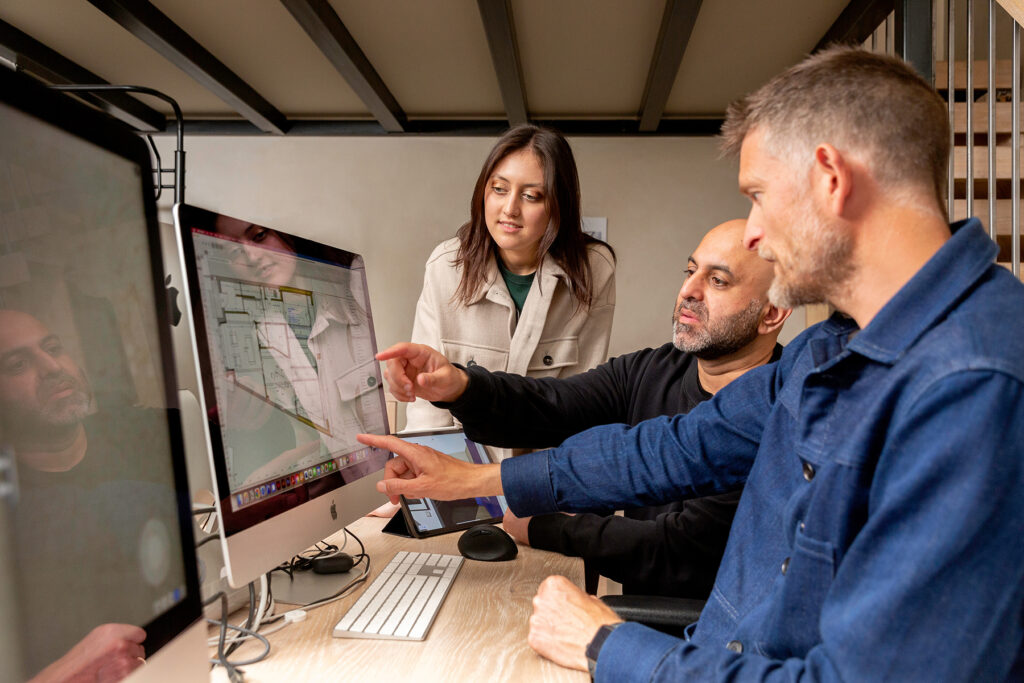
Chapter 2: Establishing Your Brief
What is your Client Brief? This document is not just a list of requirements; it’s the essence of your aspirations, the core of your vision, and the reflection of your lifestyle. It’s where the metamorphosis of your dream into a tangible structure begins.
It’s your story narrated in needs and wants, functions and forms. It should encapsulate everything from your longing for a sun-lit kitchen for family breakfasts to a cosy corner by a window for your evening reads. This brief becomes the cornerstone for both you and your architect – a beacon that guarantees every design decision is in harmony with your ultimate vision.
In crafting your brief, embrace both specificity and open-mindedness. Start with the fundamental questions: What is the purpose of this space? Who will use it, and how? Your brief should articulate the fundamental elements – the number of rooms, the flow of space, and the relationship of your home to the surrounding environment. Yet, remember, the beauty of a brief lies in its potential to evolve. Just as life is unpredictable, so too can the design process. The brief you commence with might not be the one you end with – and that’s perfectly alright.
Your brief should be a living document that leaves room for innovation. Perhaps you start with the desire for a sustainable home that harnesses natural light and heat, but through the design journey, you discover opportunities for rainwater harvesting or solar energy solutions. A good brief paves the way for these discoveries.
Don’t shy away from including your aesthetic preferences. Are you drawn to the minimalism and clean lines of modern design, or do you find comfort in the warmth and familiarity of traditional styles? This isn’t about setting limitations; it’s about establishing a starting point from which your architect can explore and expand.
Moreover, address the non-tangibles. Consider how you want the space to feel. Do you envision a bustling hub for entertaining friends or a tranquil retreat from the pace of city life? Conveying the atmosphere you want to achieve is as critical as the physical components of your brief.
As you pen down your needs, be equally mindful of your desires. There is often a dance between the two – a balance that your architect will help you achieve. ‘Must-haves’ and ‘like-to-haves’ should both find a place in your brief, giving your architect a clear understanding of where there’s room for manoeuvre.
Lastly, consider the journey of the build itself. What are your expectations in terms of involvement? Are you planning to be hands-on, or would you prefer to entrust the process to the expertise of your architect, being called upon only when decisions are needed?
Your architect’s role is to take this brief – the heart of your project – and nurture it. It’s our responsibility to honour the trust you’ve placed in us by interpreting your words and sketches into a form that not only meets but exceeds your expectations.
By crafting a detailed, flexible brief, you lay the groundwork for an architectural design that doesn’t just house your life but enhances it. The process of establishing your brief is the first step on a collaborative path, one which, when navigated with care and passion, leads to the creation of a space that is inherently and uniquely yours.
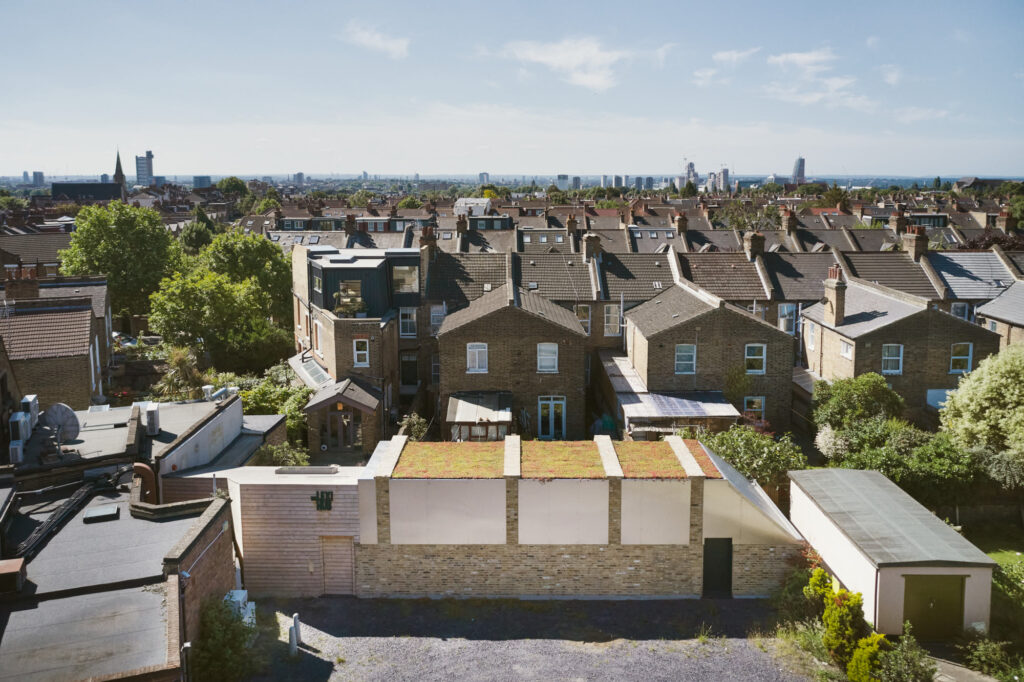
Chapter 3: Choosing a Sustainable Architect
When it comes to shaping the future of your home, the choice of an architect is not merely a matter of aesthetic preference; it’s a profound decision that can echo through the lifetime of your building and beyond. In a world increasingly attuned to the rhythms of nature, finding an architect whose practice is rooted in sustainability is no longer a ‘nice-to-have’ – it is essential.
The studio I founded stands as a testament to the belief that our spaces should exist in a harmonious balance with the environment. This principle guides every line we draw, every material we choose, and every space we envision. As you search for the right architect to bring your sustainable dream home to fruition, it’s crucial to find someone who embodies this balance, a professional who can thread the needle between innovative design and ecological responsibility.
The quest for a sustainable architect is a quest for a visionary – someone who sees beyond the current trends and looks towards creating a legacy of resilience and environmental stewardship. This professional will not just be adept in the language of design but fluent in the dialect of sustainability. They will understand the intricate dance of light and shadow, the silent power of thermal mass, and the subtle art of natural ventilation. They’ll know how to harness the earth’s bounty – be it the sun, the rain, or the wind – and use it to create a home that breathes with the land, rather than against it.
In our practice, every project begins with a respectful conversation with the site itself. It’s about listening to the whispers of the land and the tales of the climate. Your architect should see the unique challenges of your project not as obstacles but as inspirations for innovative solutions. They should celebrate the peculiarities of your site, leveraging them to create a design that is as efficient as it is enchanting.
A true sustainable architect doesn’t just pay lip service to the green buzzwords; they live and breathe sustainability. They are conversant with the latest advancements in sustainable materials and technologies, and they should be eager to discuss the merits of each with you. They won’t shy away from explaining how they can design a home that minimises energy use throughout its life cycle, or how the choice of certain materials can reduce your carbon footprint.
This professional will present you with a palette of options, from locally sourced materials that tell a story of community and provenance, to cutting-edge smart systems that learn and adapt to your living patterns, ensuring your home is running at peak efficiency. They’ll have a portfolio that speaks not just to the visual impact of their designs, but to the performance and resilience of their buildings.
Choosing a sustainable architect is not just a transaction; it’s the beginning of a partnership. It’s a shared journey towards creating a space that nourishes your soul while nurturing the planet. As you embark on this journey, look for someone who shares your passion for the environment, who treats your vision with the care it deserves, and who approaches each decision with an eye to the future.
Your sustainable architect should be more than just a service provider; they should be a custodian of your dreams and a guardian of the earth. Their work will stand as a testament to the fact that human ingenuity and respect for the environment can co-exist, creating homes that are not just places to live but sanctuaries that elevate our connection to the world around us.
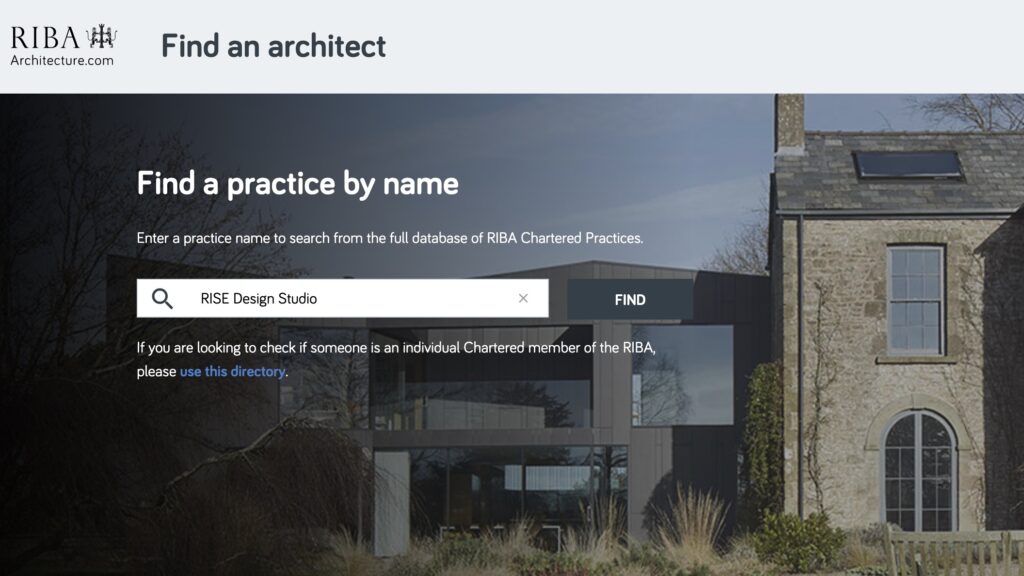
Chapter 4: Where to Search for Potential Architects
Begin this adventure with the most time-honoured of ways: word-of-mouth. Engage in conversations with friends, family, or colleagues who’ve walked this path before. Their experiences, glowing recommendations, or even tales of caution can illuminate your way forward. This personal testimony is invaluable, providing insights that you won’t find in any brochure or website.
Expand your horizons to the respected directories of professional bodies, such as the Royal Institute of British Architects (RIBA). These institutions uphold the highest standards in architecture, offering a catalogue of professionals who are not just skilled but are bound by a code of ethics and professional practice that ensures your trust is well-placed.
In the boundless realm of the digital world, there is a plethora of avenues to pursue. Online portfolios, architectural forums, and even social media channels are the new frontiers for finding talent. They allow you to take a virtual tour through the works of numerous architects from the comfort of your own home. Websites of architectural firms often display their previous projects in great detail, offering a window into their style and capabilities.
As you sift through the potential candidates, it’s important to hold a magnifying glass to their body of work. What’s the scope of their projects? Do they demonstrate a breadth of ability or a deep dive into a style you adore? How do they articulate their design philosophy? You’re not just looking for an architect; you’re looking for an artist whose previous canvases resonate with the masterpiece you envision.
Be sure to align their expertise with your values. If sustainability is your clarion call, seek out those whose designs have danced to this tune harmoniously. If innovation sets your heart racing, look for architects who push boundaries and redefine norms. This is about harmony — your chosen architect should sing from the same hymn sheet as you, creating a symphony that is as delightful to the ear as it is transformative in space.
Chapter 5: Evaluating Past Work – The Art of Architectural Storytelling
As you narrow your search and the list of potential architects begins to take shape, the next step is to immerse yourself in their past creations. This is where the essence of their craft comes to life, telling you stories not just of buildings, but of the ambitions, dreams, and lives that inhabit them.
Each project in an architect’s portfolio is a chapter of their professional narrative. Look beyond the stunning imagery and delve into the context, challenges, and solutions that each piece of work presents. Did the architect’s designs evolve from the natural landscape, or stand as a beacon of modernity in a traditional setting? How have they tackled similar briefs to yours, and what unique flair did they bring to the table?
It’s essential to not only appreciate the visual splendour of their past work but to understand the functionality and lived experience of those spaces. Consider reaching out to previous clients if possible. Their day-to-day life in the architect’s creation can offer you the most candid review of how well the vision was translated into reality.
Furthermore, don’t hesitate to question how these designs have aged over time. A true testament to good architecture is not just how it dazzles upon completion, but how it endures, adapts, and continues to inspire as the years pass. The patina of time can either diminish or enrich a design and an architect whose work matures gracefully, much like a fine wine, is indeed a rare find.
In the final analysis, evaluating an architect’s past work is akin to peering into the soul of their practice. It’s about seeing the evidence of innovation, the commitment to client satisfaction, and the passion for creating spaces that do more than function—they elevate. As you turn each page of their architectural story, you should feel a growing sense of excitement at the prospect of your chapter being written by such skilled hands.
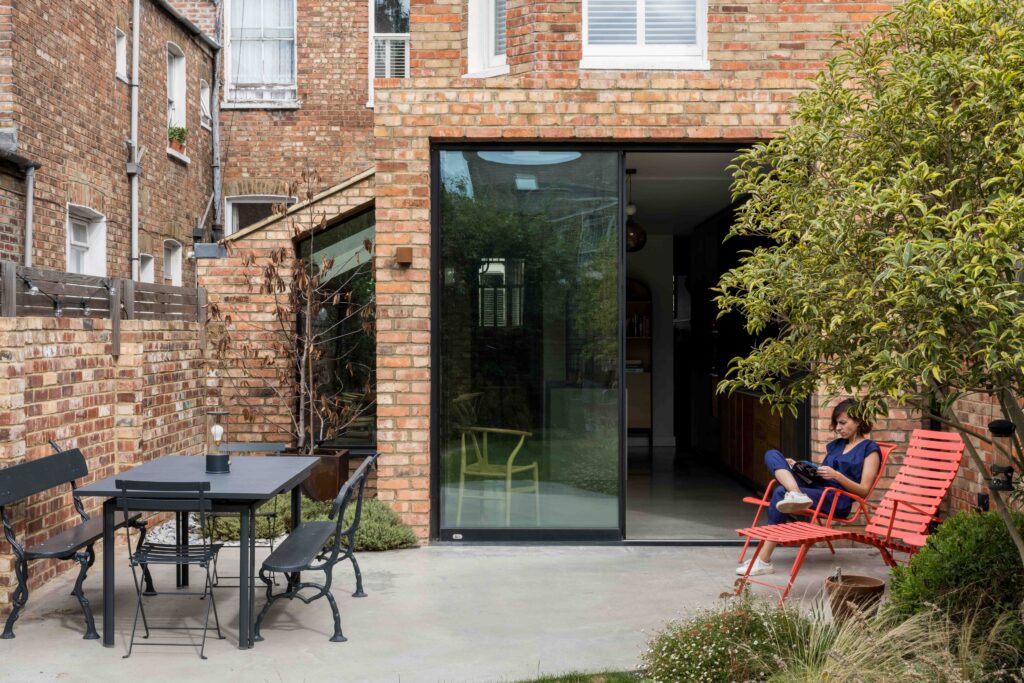
Chapter 5: Evaluating Past Work – A Journey Through Architectural Mastery
Embarking on the delightful journey of reviewing an architect’s past work is much like wandering through an art gallery, where each creation is a revelation of the artist’s inner world. An architect’s portfolio, bursting with architectural drawings, sketches, and photographs, is more than a mere exhibition; it’s a narrative of their professional odyssey that invites you to find your place within it.
As you pore over their previous projects, it’s crucial to sense the harmony between their architectural language and the dream space you wish to conjure. Can you imagine your life unfolding within the frameworks they’ve designed? Does the ebb and flow of their creative expression align with the rhythms you envisage for your own abode?
Remember, the pictures that capture the elegance of structures bathed in the perfect light, the diagrams that neatly lay out functional spaces, are but the tip of the iceberg. To fully appreciate the architect’s craft, delve deeper. Engage in conversations with the architect about their showcased work. This dialogue can often unearth a treasure trove of insight into their approach, adaptability, and innovation that may not be immediately apparent from initial impressions.
Be inquisitive about the stories behind the structures. How did they tackle particular design challenges? What inspired certain aesthetic choices? It’s within these stories that you often find the true measure of an architect’s problem-solving prowess and creative vigour. You might discover that a simple façade hides a labyrinth of eco-friendly systems or that a minimalist interior is a sophisticated play of light and shadow designed to enhance well-being.
Moreover, the versatility of an architect’s work might extend beyond what’s captured in their official portfolio. Many architects have a wealth of experience and experiments that never make it to the glossy pages but are integral to their professional journey. Discuss projects that may not have been headliners but are indicative of a readiness to innovate and tailor their expertise to specific client needs.
When you evaluate an architect’s past work, you’re not just looking at static images; you’re envisioning your future through their past creations. It’s about finding a resonance, a shared language, a mutual understanding of what it means to create not just a building, but a home, a sanctuary, a space that encapsulates your very essence.
As you turn each page of their architectural anthology, allow yourself to be open to the stories that each project tells. Look for evidence of a design philosophy that is flexible yet focused, creative yet conscious of the client’s voice. It is this delicate balance that will assure you of their capability to take the raw material of your aspirations and sculpt it into a place that not only stands the test of time but also becomes a testament to your unique journey together.
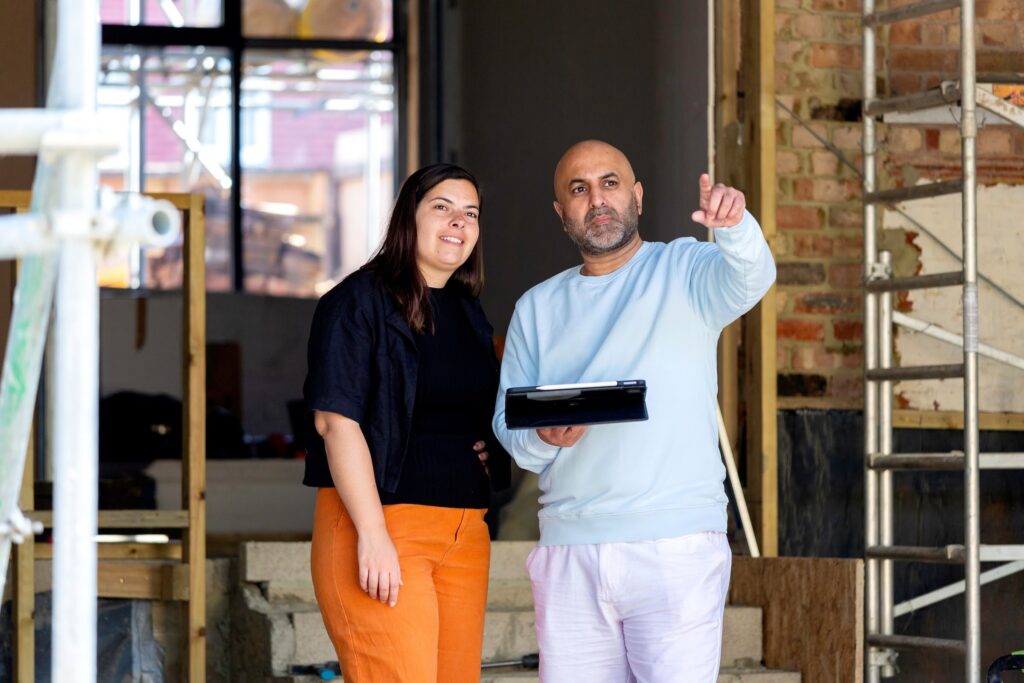
Chapter 6: The Personal Connection – Cultivating a Creative Partnership
Imagine finding someone who doesn’t just share your vision but amplifies it, someone who not only listens to your dreams but also adds colour and texture to them. This is the essence of the bond between you and your architect – it’s a relationship that’s inherently personal, brimming with potential and collaborative spirit.
The magic happens in the meetings where you feel heard and understood, where a casual comment about loving the play of sunlight in the morning can inspire an entire aspect of the design. It’s the little nods of agreement, the shared smiles at an emerging idea, and the energetic discussions that signal you’re on the same wavelength.
This connection isn’t merely about agreeing on a style or a layout; it’s the deeper understanding that your architect appreciates the way you envisage living in your space. It’s the mutual respect for each other’s expertise and experiences – you as the visionary for your future home, and them as the maestro of making it a tangible reality.
Open communication is the bedrock of this partnership. It ensures that expectations are clear, feedback is welcomed, and creative solutions are born from joint contemplation. It’s about being comfortable enough to voice concerns and confident enough to explore options you may not have considered.
Nurture this rapport with regular catch-ups, be it over a cup of tea or a detailed discussion in their office. Use these sessions to check in on the progress, but also to share inspiration – perhaps a photograph you took, a texture you felt, or an experience at a friend’s home that made you think, “This is how I want to feel in my space.”
Remember that this journey you’re embarking on together is not just a commercial agreement; it’s a shared enthusiasm for creating something exceptional. The joy you both find in discussing possibilities, in sketching out ideas, and in selecting materials, is the fuel that will keep the project vibrant and visionary.
A truly harmonious architect-client relationship transcends the formalities of business and becomes a creative alliance. Within this alliance, ideas are nurtured, challenges are met with ingenuity, and the end result is not just a space that you live in, but a space that lives and breathes your personal narrative.
In every conversation, every shared sketch, and every decision made, the personal connection between you and your architect is the golden thread that weaves the fabric of your future home. It’s within this relationship that your shared vision for a unique space will not only take root but also blossom into a place that echoes your life’s melody with architectural eloquence.

Chapter 7: Communication and Collaboration – Crafting the Conversational Blueprint
In the tapestry of bringing your architectural dreams to life, the threads of communication and collaboration are interwoven in every stitch. To create a masterpiece, you and your architect must become maestros of dialogue, orchestrating your ideas and feedback to compose a harmony that resonates with the essence of your vision.
Setting the stage for this symphony of exchange begins with a candid conversation about expectations. It’s about painting a clear picture of what you envision while being open to the professional guidance your architect will provide. This mutual understanding is the cornerstone upon which your project will rise, brick by brick, idea by idea.
Establishing clear channels of communication is akin to opening the doors and windows of possibility. Whether it’s a dedicated weekly call, an email update, or a collaborative digital workspace, choose the medium that makes you both feel connected and engaged. The key is consistency and accessibility, ensuring that both of you can share progress and feedback as fluidly as a river flows through a verdant valley.
Deciding on a rhythm that suits both parties is essential. Like the ebb and flow of the tides, your communication should have a natural pace that accommodates the busy ebb of professional demands and the flow of personal reflection. This cadence will allow for thoughtful responses and measured progress.
While your architect is a veritable fountain of expertise, brimming with innovative ideas and solutions, it’s vital to remember that your insights as the client are the lifeblood of the project. You are the storyteller; your experiences, desires, and dreams are the chapters that give the narrative its depth. Your input is a treasure trove, and every nugget of information can spark a design idea that could become the centrepiece of your home.
Foster a relationship where feedback flows in both directions. It should be as easy for you to voice a concern as it is to share a burst of inspiration that struck you while walking through a park or browsing a magazine. This collaborative environment is the crucible in which the raw materials of creativity are transformed into the gold of innovation.
In this partnership, it’s not just about talking; it’s about listening – truly listening – to the cadence of concerns and the melody of aspirations. It’s in the active engagement, the exchange of ideas, and the collective problem-solving that the vision for your space is refined and realised.
In essence, communication and collaboration are not just the pathways to ensuring your project’s success; they are the very essence of the architectural journey you are embarking on. Like a well-tuned orchestra, every note you play and every note played by your architect will contribute to a final performance that is not just structurally sound but also a resounding echo of your shared vision.
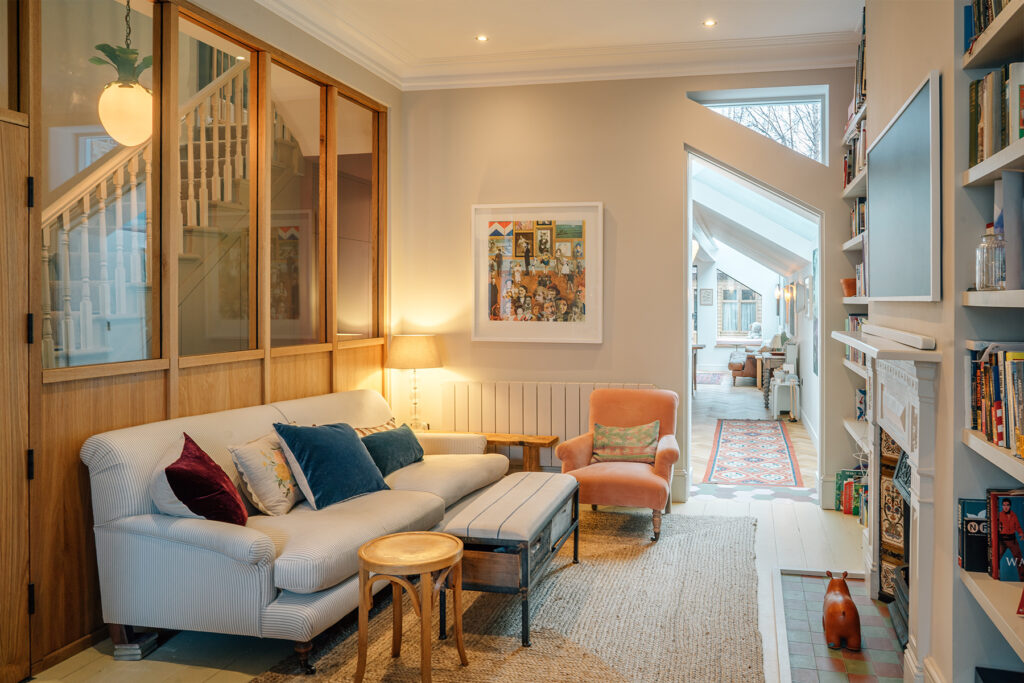
Chapter 8: Budget Considerations
Embarking on the adventure of creating your dream home is thrilling, but let’s not forget it’s also an investment – a significant one at that. Chapter 8 is dedicated to the not-so-small matter of pennies and pounds. Your budget isn’t merely a number scribbled on the back of an envelope; it’s the financial heartbeat of your project, a vital sign that keeps the dream pulsating within the realms of reality.
Approach the financial aspect of your build with honesty and transparency. It’s important to lay your cards on the table, sharing your budgetary constraints and aspirations with your architect from the get-go. It’s not about simply stating a figure; it’s about understanding how that figure will shape and, indeed, enable every design decision made along the way.
Think of your budget as the canvas upon which your dreams will be painted. It sets the dimensions, but within those borders, there’s an entire spectrum of possibilities. Your chosen architect should be like a skilled artist who understands the value of each stroke, ensuring that not a single drop of your investment is wasted on the unnecessary.
Your architect alongside a cost consultant should have the prowess to navigate the delicate balance between cost and creativity. They should be adept at guiding you through a cost-effective design journey that doesn’t cut corners on the integrity or performance of your home. Whether it’s selecting materials that offer durability without the daunting price tag or designing spaces that are luxurious in their simplicity, your architect should know how to make your budget work as hard as it can.
Respect for your financial parameters is paramount. Your architect should be capable of presenting options and alternatives, explaining the implications of each choice without ever pressuring you to stretch beyond what you’re comfortable with. It’s a collaborative dance of numbers and nuances, where value engineering becomes an art form in itself.
Let’s not forget that a budget should be a living document, something that evolves just as the project does. Allow some wiggle room for unexpected opportunities or unforeseen challenges. Your architect should help you prepare for these contingencies, offering sound advice on where to splurge and where to save, ensuring that the end result is something that’s not only beautiful and functional but also financially sustainable.
In conclusion, the financial blueprint of your project requires as much attention to detail as the architectural blueprints. With a relationship grounded in mutual understanding and respect for the budget, you and your architect can confidently navigate the fiscal waters, ensuring that when your home is complete, it stands as a testament not just to good design, but to smart financial planning and collaboration.
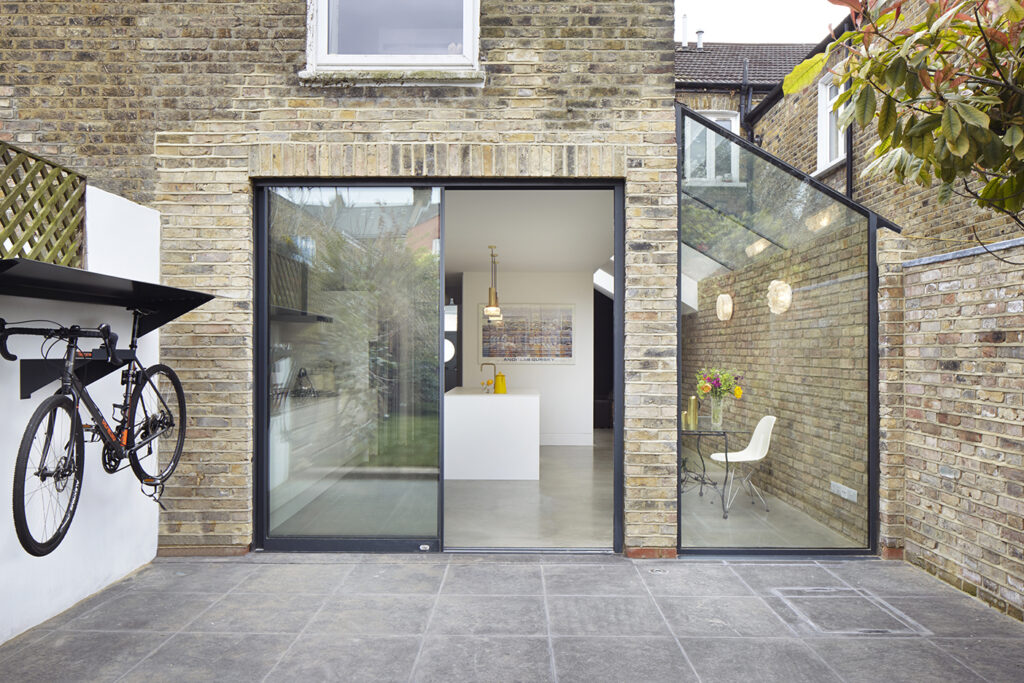
Chapter 9: Respecting the Design Process – The Journey from Vision to Reality
Embarking on the design process is akin to starting a marvellous new chapter in the book of your life. It’s an enchanting journey from the first flicker of an idea to the moment you step across the threshold of your completed home. This process, my friends, is one of refinement, imagination, and meticulous care, a path you walk alongside your architect, where your dreams are given the respect and the attention to detail they truly deserve.
At the heart of this journey is a dance between your dreams and the expertise of your architect. It’s important to trust in their professional insights, to let their knowledge lead the way, while also staying true to your personal vision. You see, every decision made is a step towards creating a space that’s a reflection of you, a home that will cradle your future memories.
Now, while change is an inevitable part of life, when it comes to the design process, it’s wise to tread lightly. Revisions should not be made on whims; they should be considered moves, akin to a grandmaster’s play in a game of chess. Each alteration, no matter how minor it may seem, ripples through the entire project, potentially impacting timeframes and budgets. It’s about finding that perfect balance between what’s desired and what’s required.
Your architect is more than just a designer; they are skilled navigators, steering the project through the often turbulent seas of change. They will help you understand the implications of each revision, how it affects the intricate web of planning, resources, and regulations. Their goal is to ensure a smooth passage from conception to creation, avoiding the storms of miscommunication and the shallows of indecision.
As we proceed through this process, let’s do so with open minds and open hearts, understanding that the path may twist and turn, but every step is progress. Limiting revisions to the essential not only shows respect for the design process but also ensures that each choice is intentional, each adjustment meaningful.
Together, with your architect, you’ll find that the design process isn’t just about erecting walls and choosing fixtures; it’s about creating a canvas for life’s moments, big and small. It’s a careful, deliberate journey where patience and passion are the twin virtues that will ultimately lead to a home that’s not just built but is crafted, with love, creativity, and respect for the art and science of architecture.
In the grand tapestry of building your home, the design process is one of the most intricate threads. By honouring this process, by engaging with it fully and thoughtfully, you ensure that the end result is not just a structure, but a living, breathing expression of what home truly means to you.
Chapter 10: The Art of Decision-Making
Welcome to the art gallery of decision-making, where every choice is a stroke of the brush on the canvas of your future home. Here, we don’t just make decisions; we sculpt them, with the precision of a master craftsman, ensuring that every facet of your abode resonates with the harmony of form and function.
Think of it as a beautiful dance between what the heart wants and what practicality dictates. It’s a delicate waltz, a give and take between the allure of sleek, contemporary designs and the timeless charm of functional spaces. As your architectural confidant, I’m here to lead this dance, to help you find that sweet spot where your desires are not just met, but serenaded by the logic of smart design.
But it’s not just about the here and now. It’s about peering into the future, envisioning your life unfolding in the spaces we create together. We’re not just choosing materials and textures; we’re selecting the backdrop to your life’s most cherished moments. Each decision is an investment in your future, a careful placement of the pieces that will compound into the value of a home that’s as enduring as it is inviting.
This, my friend, is where the true skill lies – in making choices that celebrate sustainability without whispering a word of compromise on elegance. It’s about embracing innovations that uplift your living experience while also being kind to our planet. Your home should be a sanctuary that stands proud, a testament to a design that is as conscious as it is captivating.
Together, we will navigate this sea of choices. With a keen eye on the horizon, we’ll ensure that the decisions we make not only shine today but also glow with the patina of time. We will weigh the scales, balancing the bold with the sensible, the dream with the doable.
It’s all about having the foresight to see beyond the immediate allure of trends and the finesse to intertwine aesthetics with the threads of everyday needs. It’s a collaborative journey, one where your insights and dreams are the compass that guides us, and my expertise is the map.
So let’s embark on this adventure with hearts full of hope and minds brimming with ideas. Together, we’ll craft not just a living space, but a living masterpiece, your personal haven where every corner, every curve, whispers your name with the warmth of a home that’s truly yours. After all, this is not just architecture; it’s the art of creating joy, comfort, and memories, one decision at a time.

In conclusion, let’s take a moment to appreciate that the search for an architect is akin to finding a creative partner, one who will embark with you on a most thrilling and transformative journey. It’s about so much more than simply scanning through portfolios and weighing up costs. It’s about discovering that person with whom your thoughts, dreams, and aspirations for your home resonate—a kindred spirit in design and innovation.
Choosing the right architect transforms this journey into an enthralling adventure, replete with shared discoveries, mutual excitement, and a collaboration that’s as seamless as it is spirited. It’s about crafting a narrative together, where each draft and blueprint becomes a chapter of a story that you are both eager to tell—a story that takes shape not just in lines and contours on paper but in the very walls and windows of your future abode.
With the ideal architect by your side, you are not just constructing a building; you are breathing life into your vision, giving it a place to thrive and a space to resonate with your individuality. The right professional doesn’t only share your journey; they enhance it, bringing to the table a medley of expertise, creativity, and passion, turning challenges into triumphs and ideas into realities.
As you turn each page from the initial sketches to laying the final cornerstone, you’ll find that the process becomes a shared expedition—a melding of minds and talents that culminates in a home that is not just built but is lovingly crafted. It’s a home that does more than stand; it speaks, it embraces, it inspires.
So, as you set out to select your architectural ally, do so with the understanding that you are picking a co-author for the next exciting chapter of your life. With the right architect, your journey will be one of mutual creativity and joy, culminating in a space that does more than exist—it truly lives, breathes, and echoes the essence of your dreams. Here’s to finding the one who will hold the pen with you as you draw out the blueprints of tomorrow.
If you would like to talk through your project with the team, please do get in touch at mail@risedesignstudio.co.uk or give us a call at 020 3290 1003
RISE Design Studio Architects company reg no: 08129708 VAT no: GB158316403 © RISE Design Studio. Trading since 2011.
